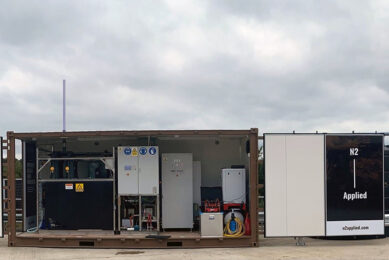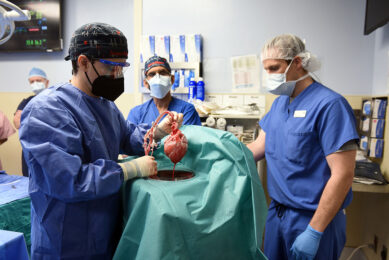UK: proper preparations key prior to slaughter
A workshop, organised in North Licolnshire, UK, dealt with the importance of a proper preparation prior to sending pigs to slaughter.
The workshop, held earlier this month, was organised by environmental and agricultural specialist agency ADAS, in conjunction with the British Department of Environment, Food and Rural Affairs (Defra) and Defra. It was held in the town of Greyingham, North Lincolnshire.
Speaking were John Chambers, a freelance pig consultant. He spoke about the slap marketing issues. Odelle Walker, pig consultant for ADAS (UK Agricultural Development and Advisory Service), spoke about welfare issues.
In addition there was an interesting talk by East Yorkshire-based veterinarian Mark White. He spoke about the British Pig Health Scheme, which provides post-slaughter data on lungs, liver and general carcass status.
Topics discussed included:
• The care needed when pigs go for slaughter. Speakers discussed the use of a well-designed loading ramp and passages. Passages should have solid walls, be the same width and should not narrow, as this means pigs get squeezed and stressed.©
• The location and attitude when encouraging pigs to move forward. Standing behind them would be advisable. When standing in front of them they can see a person and will move backwards. Using the ‘lead’ pig to show the others the way was recommended, just as silence. Pigs don’t like noise, so shouting nor rushing was advised. “Less haste, more speed!”©
• Identification issues. In the UK, it’s a legal requirement that all slaughter pigs have to be identified by a tattoo mark on both shoulders, applied by means of a hand held slap marker. Each farm’s tattoo is a unique combination of letters and numbers. Producers should check where the technician stands on the killing line relative to the carcasses and should therefore apply the first slap mark on that side of the pig.©
• The slap marker should be re-inked between every one or two pigs and cleaned after use to remove accumulated hair. This can be by using a wire brush and soapy water, or by pressure washing. If a producer’s pigs are poorly slap-marked, the abattoir can end up paying the farmer for a poorer quality pig, so there is logic in taking time and effort to do the job correctly.©
• Fasting issues: Fasting pigs pre-slaughter for 24 hours can result in a weight loss of 3.8% of their initial weight and 2.1% of carcass weight in comparison with a four hour fasting period. The optimal fasting period is eight to 12 hours.©
Related websites
• ADAS
• Defra©
©











